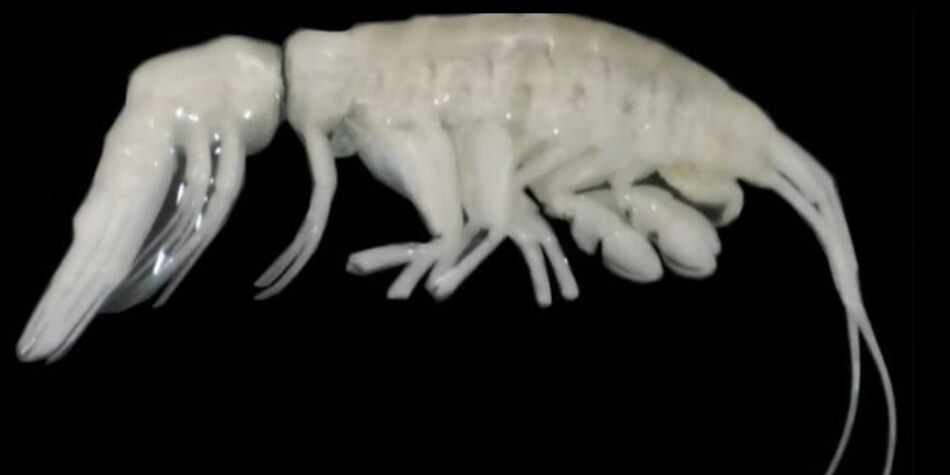Scientists Unveil New Deep-Sea Predator, ‘Darkness’ A collaborative team of scientists from the United States and Chile has uncovered a new species of predatory amphipod, Dulcibella camanchaca, within the Atacama Trench, located off South America’s western coast.
Discovered at an impressive depth of 7,902 meters, this marks a significant milestone in the exploration of the deep ocean. The creature’s unique predatory nature and its designation as a new genus make it a remarkable find.
D. camanchaca is the first predatory amphipod known to inhabit the hadal zone, the part of the ocean exceeding depths of 6,000 meters.
Unlike most amphipods, which feed on decaying organic material, this species actively hunts smaller amphipods using its specialized raptorial appendages, called gnathopods.
Measuring just under 4 centimeters, it is also notably larger than similar amphipods found in deep-sea environments.
The genus name, Dulcibella, draws inspiration from Dulcinea del Toboso in the classic novel Don Quixote, continuing a tradition of naming amphipods after literary figures.
The species name, camanchaca, comes from South American indigenous languages and translates to “darkness,” reflecting its existence in the pitch-black depths of the trench.
The discovery was made during a 2023 expedition led by Chile’s Integrated Deep-Ocean Observing System. Using a lander vehicle outfitted with baited traps, researchers successfully collected specimens from the Atacama Trench, a region known for its extreme pressure and temperature.
The find underscores the area’s potential as a hotspot for unique and endemic marine life.
This breakthrough highlights the critical importance of further exploration of the deep ocean, particularly in largely uncharted regions like the Atacama Trench.
The identification of D. camanchaca and its new genus offers valuable insights into the functioning of deep-sea ecosystems and raises the possibility of similar life forms existing on oceanic moons like Europa and Enceladus.
Published in Systematics and Biodiversity, the study contributes to the expanding knowledge of life in Earth’s most extreme marine environments, emphasizing the potential for discovering more hidden species in the world’s ocean depths.


